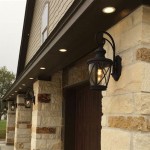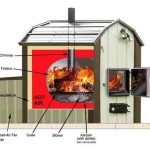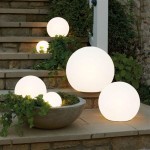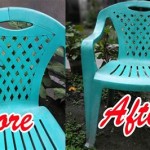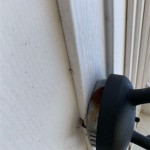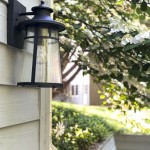Motion Detector Lights Outdoor: Enhancing Security and Convenience
Motion detector lights are an increasingly popular choice for outdoor lighting, offering a multifaceted approach to security and convenience. These lights automatically activate when motion is detected within a specified range, illuminating the area and serving as a deterrent to potential intruders. Beyond security, motion-activated lights also provide practical benefits such as illuminating pathways at night, conserving energy, and adding a layer of safety to outdoor spaces.
The effectiveness of outdoor motion detector lights hinges on several factors, including the quality of the light fixture, sensitivity of the motion sensor, proper placement, and appropriate settings. Understanding these elements is crucial for maximizing the benefits of these lighting systems.
Understanding the Functionality of Motion Sensors
The core of a motion detector light is the sensor itself. The most common type of motion sensor used in outdoor lighting is the passive infrared (PIR) sensor. PIR sensors detect changes in infrared radiation emitted by objects (including humans, animals, and vehicles) within their field of view. Every object with a temperature above absolute zero emits infrared radiation. When an object with a different temperature moves into the sensor's field of view, it triggers the light.
Other types of motion sensors, such as microwave sensors and dual-technology sensors, are also available, though less commonly used in residential outdoor lighting. Microwave sensors emit microwave pulses and detect changes in the reflected signals. They are generally more sensitive than PIR sensors and can detect motion through walls or other obstructions. Dual-technology sensors combine PIR and microwave technology to reduce false positives. Both sensors must be triggered simultaneously for the light to activate.
The range and detection angle of a motion sensor are critical specifications to consider. The range indicates the maximum distance at which the sensor can reliably detect motion. The detection angle defines the area within which motion can be detected. For instance, a sensor with a 180-degree detection angle covers a wider area than one with a 110-degree angle. The appropriate range and angle depend on the specific area being illuminated and the desired level of security.
Sensitivity settings allow the user to adjust how responsive the sensor is to motion. Lower sensitivity settings require larger temperature changes or closer proximity to trigger the light, reducing the likelihood of false alarms from small animals or moving foliage. Higher sensitivity settings will detect even minor movements at a greater distance.
Another important setting is the "on-time," which determines how long the light remains illuminated after motion is detected. This setting can be adjusted to conserve energy and prevent unnecessary illumination. A shorter on-time is suitable for areas where only brief illumination is needed, while a longer on-time is preferable for areas where extended visibility is desired.
Key Considerations for Selecting Outdoor Motion Detector Lights
Selecting the right motion detector light involves evaluating several factors to ensure the chosen fixture meets specific needs and preferences. These factors encompass the type of light, light output, durability, style, and ease of installation.
Several types of light sources are commonly used in motion detector lights, including LED, halogen, and incandescent bulbs. LED lights are the most energy-efficient and long-lasting option, providing bright illumination while consuming minimal power. They also offer instant-on capability, which is beneficial for security lighting. Halogen lights are brighter than incandescent bulbs but less energy-efficient than LEDs. Incandescent bulbs are the least expensive option but have a shorter lifespan and lower energy efficiency.
Light output is measured in lumens, which indicates the brightness of the light. The required lumen output depends on the size of the area being illuminated and the desired level of brightness. For general security lighting, a lumen output of 700-1300 lumens is typically sufficient. For larger areas or areas requiring brighter illumination, a higher lumen output may be necessary.
Durability is a critical consideration for outdoor lighting fixtures, as they are exposed to the elements. Look for fixtures constructed from weather-resistant materials such as die-cast aluminum or durable plastic. A waterproof or weatherproof rating (IP rating) indicates the level of protection against water and dust ingress. A higher IP rating indicates greater protection.
The style of the motion detector light should complement the architectural design of the property. A wide variety of styles are available, ranging from traditional lantern styles to modern, minimalist designs. Consider the overall aesthetic of the outdoor space when selecting a fixture.
Ease of installation is another important factor to consider. Some motion detector lights are designed for easy DIY installation, while others may require professional installation. If electrical wiring is involved, it is always recommended to consult with a qualified electrician to ensure safe and proper installation.
Optimizing Placement and Settings for Effective Performance
The placement and settings of motion detector lights significantly impact their effectiveness. Strategic placement ensures that the lights are positioned to maximize their detection range and deter potential intruders. Appropriate settings minimize false alarms and optimize energy consumption.
Motion detector lights should be positioned to cover vulnerable areas, such as doorways, windows, driveways, and pathways. Mounting the light at a height of 8-10 feet is generally recommended to provide optimal coverage. Avoid aiming the sensor towards sources of heat, such as air conditioners or vents, as these can trigger false alarms. Similarly, avoid aiming the sensor towards busy streets or areas with frequent pedestrian traffic to minimize unnecessary activations.
Adjusting the sensitivity settings is crucial for preventing false alarms. Start with a lower sensitivity setting and gradually increase it until the desired level of detection is achieved. Observe the light's behavior over several days to identify any potential sources of false alarms. If false alarms persist, consider adjusting the sensor's angle or masking off portions of the detection area with tape.
The on-time setting should be adjusted to balance energy conservation and adequate illumination. A shorter on-time is suitable for areas where only brief illumination is needed, such as pathways. A longer on-time is preferable for areas where extended visibility is desired, such as driveways or patios. Consider the specific needs of the area when setting the on-time.
Many motion detector lights offer additional features, such as dusk-to-dawn operation and manual override. Dusk-to-dawn operation automatically activates the light at dusk and deactivates it at dawn, providing continuous illumination throughout the night. Manual override allows the user to turn the light on and off manually, overriding the motion detection function. These features can be useful for providing temporary lighting or for specific events.
Regular maintenance is essential for ensuring the continued effectiveness of motion detector lights. Periodically clean the sensor lens with a soft cloth to remove dirt and debris, which can impair its ability to detect motion. Inspect the wiring and connections to ensure they are secure and free from corrosion. Replace bulbs as needed to maintain optimal brightness.
Motion detector lights offer a valuable combination of security and convenience for outdoor spaces. By understanding the functionality of motion sensors, selecting the right fixtures, and optimizing placement and settings, homeowners can effectively enhance security, conserve energy, and add a layer of safety to their properties. Thoughtful planning and careful implementation are key to maximizing the benefits of these lighting systems.

The Best Outdoor Motion Sensor Lights In 2024 Popular Science

Defiant 180 Degree Motion Sensor White Outdoor Security Light Df 5416 Wh A The Home Depot

Dinglilighting 10w Led Security Motion Sensor Outdoor Light Weatherproof Wide Coverage Lights Ultra Bright 6000k Detector Flood For Garden Yard Porch Black Plug In Com

Defiant 180 Degree Motion Sensor Black Outdoor Security Light Df 5416 Bk A The Home Depot

Lepro 20w Security Lights Outdoor Motion Sensor 1700 Lumen Pir Light Ip65 Waterproof Flood

Outdoor Motion Sensor Lights Lamps Plus

Motion Detector Lights All You Need To Know About Them Kato Electrical Independent Contractor Vancouver Bc

Auraglow Pir Motion Sensor Up Down Outdoor Wall Security Light Warminster Stainless Steel Led Lighting

Dinglilighting 30w Led Plug In Motion Sensor Lights Outdoor 2400lm Flood Light Detected Spotlight Ip66 Waterproof Exterior Security For Garage Yard Garden Driveway Front Door 6000k Whi Com

Outdoor Motion Sensor Lights Lamps Plus
